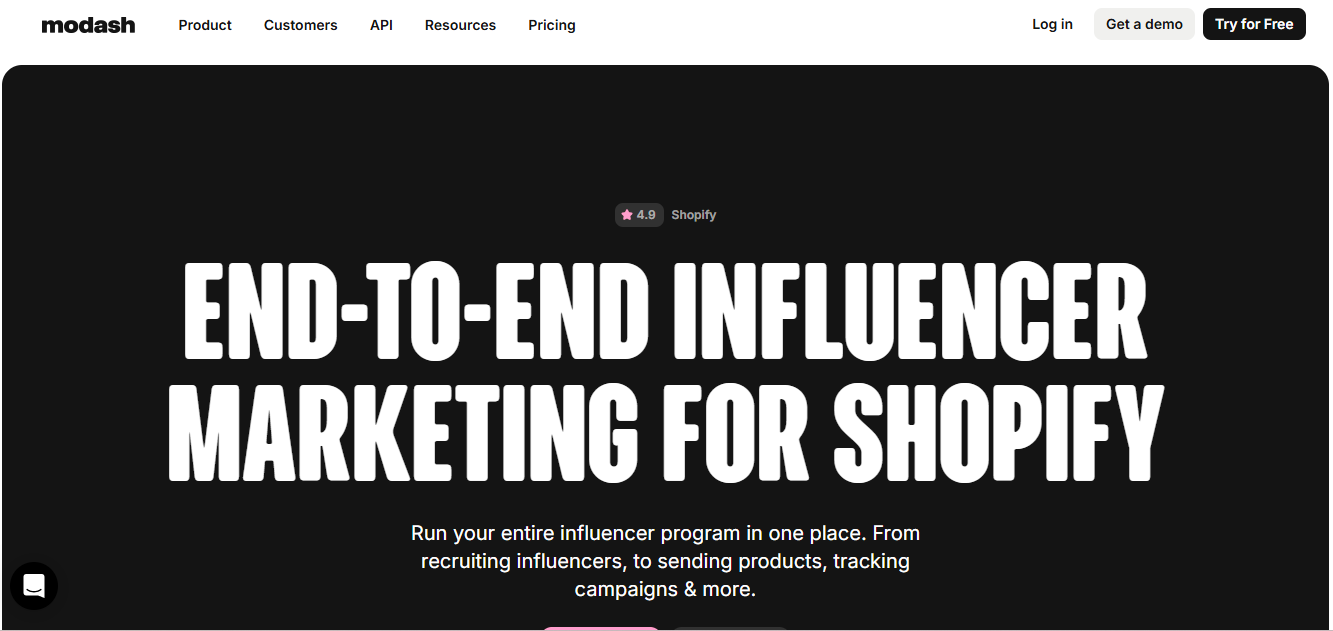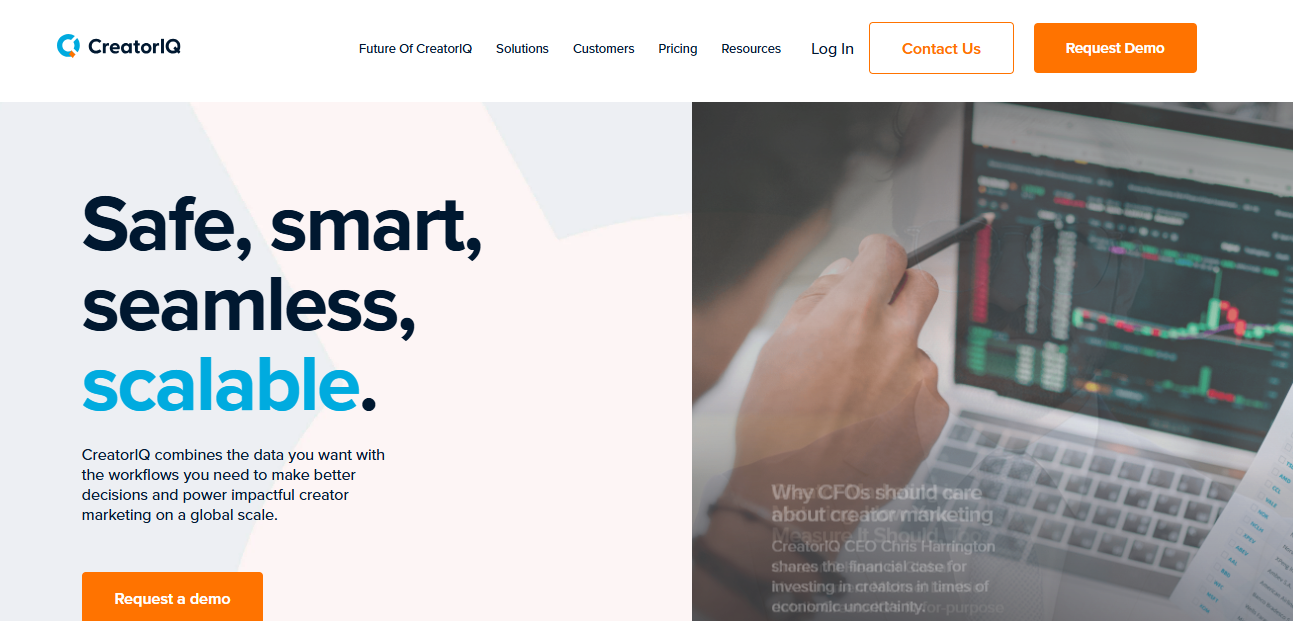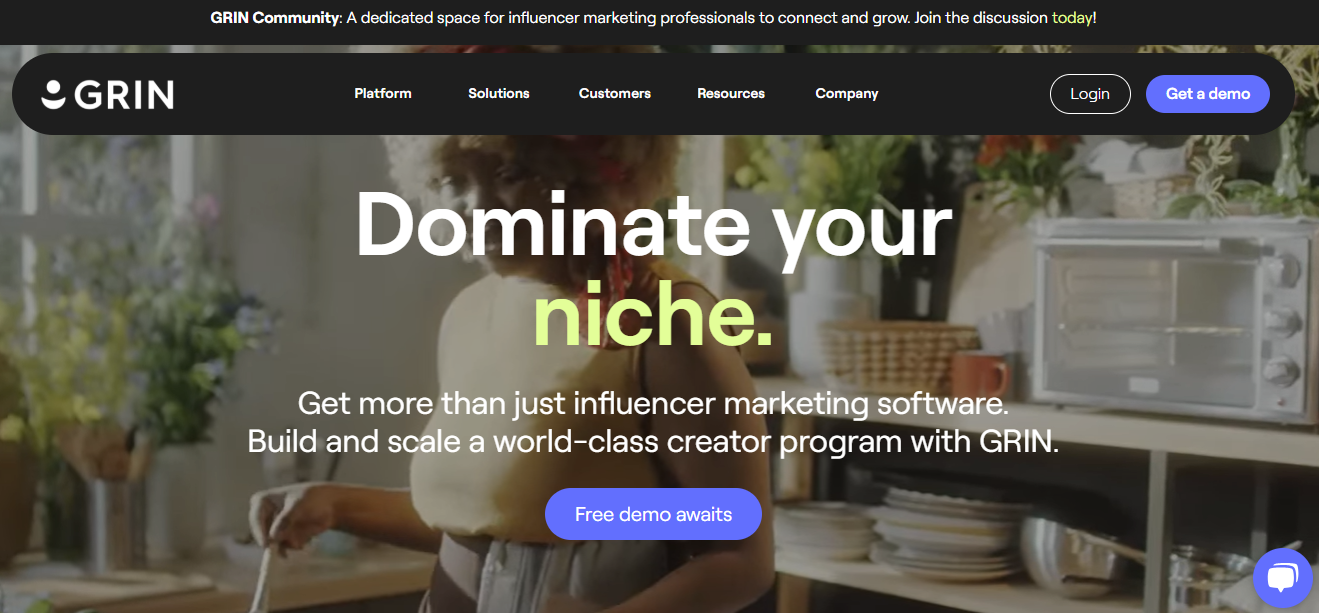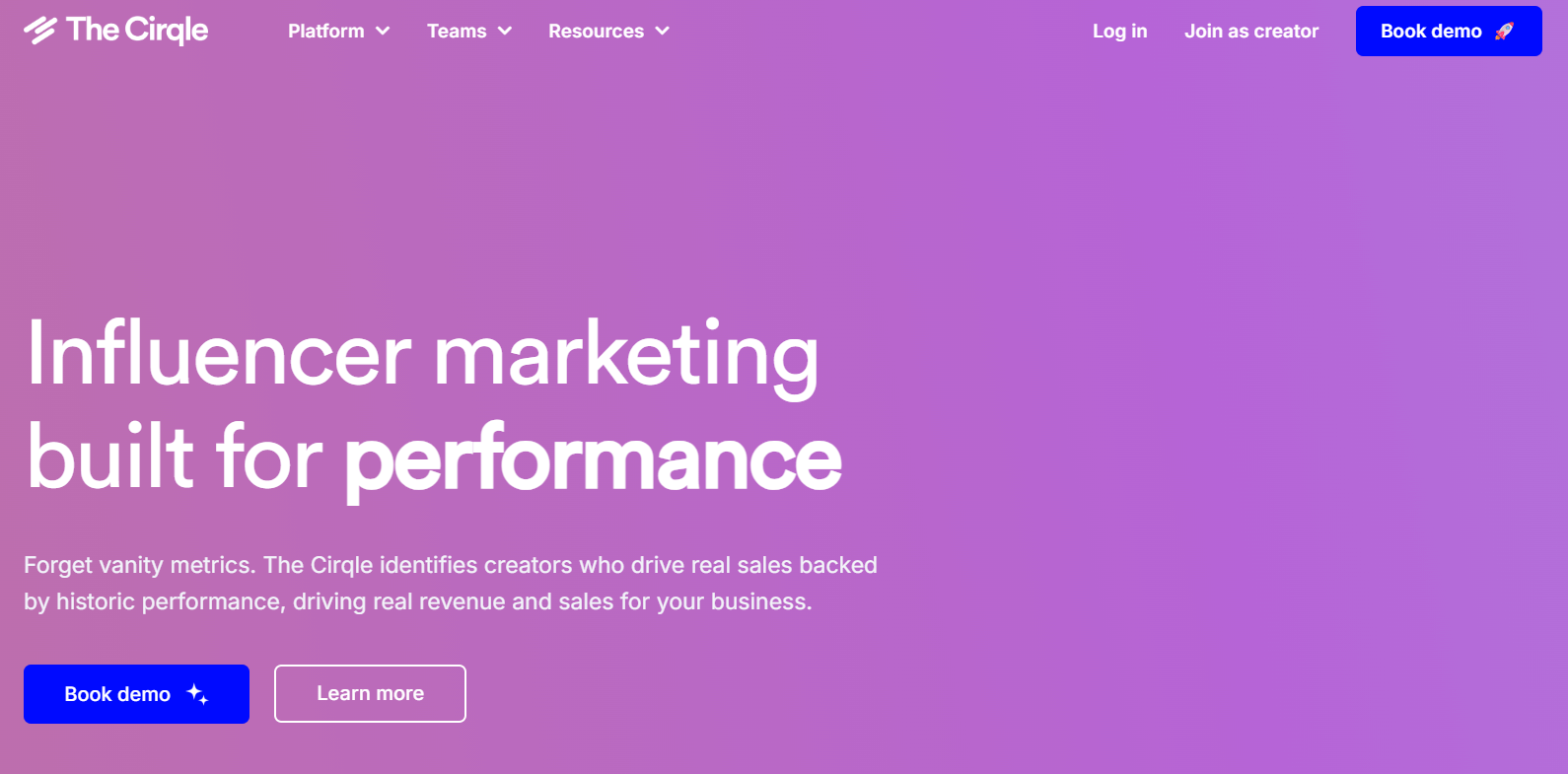





MuseFind helped brands connect with influencers, but users on G2 and Reddit have raised recurring frustrations. The biggest complaints include limited automation for influencer outreach, outdated campaign reporting tools that make ROI tracking difficult, and weak integrations with eCommerce platforms like Shopify or WooCommerce. These shortcomings often push marketers toward platforms with stronger data, easier workflows, and global coverage.
In this article, we’ll explore the top MuseFind alternatives, comparing features, pricing, and reviews to help you find the right fit. Here are the top 10 alternatives we’ll explore in detail:
Many brands are looking for MuseFind alternatives due to recurring frustrations and platform limitations that affect campaign efficiency and ROI tracking.
Users often mention that MuseFind requires too much manual work when contacting influencers. Without advanced sequencing or AI-driven messaging, scaling outreach becomes time-consuming and inconsistent.
Several reviews highlight that MuseFind’s campaign reports feel basic compared to modern standards. Metrics like engagement quality, conversions, and ROI tracking are either missing or not robust enough, making it hard to justify spending.
MuseFind lacks direct integrations with platforms like Shopify, WooCommerce, or Amazon. Brands looking to directly tie influencer campaigns to sales performance find this a major drawback compared to competitors that offer built-in affiliate tracking.
Feedback also notes that MuseFind’s influencer pool feels limited and less updated than competitors. This results in brands struggling to find fresh, authentic voices or niche creators for targeted campaigns.
Our comparison focuses on several key aspects:

Best For: MuseFind is best for small to mid-sized businesses and eCommerce brands that want an affordable entry point into influencer marketing with built-in CRM tools and campaign management support. It works particularly well for teams that prefer a straightforward, budget-friendly solution with optional human-assisted services.
Platform Coverage:
Pricing: Based on our research, MuseFind offers an All-in-One Plan for $50/month, including:
Reviews: 4.0/5.0 (Cuspera).
Ease of Use (UX/UI): Users describe MuseFind as simple and straightforward, with a clean CRM interface that eliminates spreadsheets and manual workflows. The built-in campaign workboard and templates make onboarding easier for non-marketers, though some note that reporting feels limited compared to newer platforms. Overall, its UX favors speed and simplicity over advanced customization.
Customer Support: MuseFind offers optional campaign manager support, giving brands hands-on help when needed. Users highlight responsive assistance and clear communication, though advanced features like 24/7 live chat or phone support are not included. The platform balances between self-service and human touch, appealing to brands that may need occasional guidance.

Best For: Influencer Hero is best for D2C brands and eCommerce companies on platforms like Shopify, WooCommerce, and Amazon looking to scale influencer and affiliate campaigns with automation, advanced analytics, and multi-channel reach. It’s particularly powerful for marketing teams aiming for ROI-driven campaigns and seamless creator management.
Platform Coverage:
Pricing: Influencer Hero offers flexible pricing plans to accommodate growing brands. All plans include core features and can scale as the influencer program grows.
Reviews: 5.0 / 5.0 (Capterra)
Ease of Use (UX/UI): Influencer Hero is praised for its intuitive design and clean dashboard, offering drag-and-drop campaign setup and streamlined boards. Automated workflows and customizable templates save teams hours weekly. Even non-technical users can launch campaigns in under an hour.
Customer Support: Every plan includes a dedicated account manager from day one, with 24/7 real-human live chat, responsive email support, and an extensive Help Center with written and video tutorials. Pro plan users also gain access to a private Slack channel for continuous support and optional strategy consultations for growth guidance.
Influencer Hero Standout Features:
MuseFind positions itself as a budget-friendly influencer CRM at just $50/month, offering access to 23,000 influencers and simple outreach tools. However, its database is relatively small compared to other platforms, lacks clarity on supported social channels, and doesn’t provide advanced analytics or integrations.
By contrast, Influencer Hero is built for scaling, with plans starting at $649/month and extending to custom enterprise solutions. It covers 8 major platforms, provides over 280M profiles, integrates with Shopify and WooCommerce, and includes automated outreach, AI-powered discovery, storefronts, and real-time ROI tracking.
For brands seeking a lightweight, low-cost tool, MuseFind can be appealing, but growing D2C and eCommerce companies looking for scale, automation, and proven ROI will find Influencer Hero far more powerful and future-proof.

Best For: Modash is best for eCommerce brands and agencies that want to scale influencer programs with a focus on Shopify-driven gifting, affiliate automation, and global creator discovery. Its large creator pool and AI-powered discovery make it ideal for brands targeting multiple regions or niches with data-driven campaigns.
Platform Coverage:
Pricing: There are different plans and options.
Reviews: 4.7/5.0 (G2)
Ease of Use (UX/UI): Users highlight Modash’s streamlined workflow from discovery to campaign tracking and payouts. The dashboard is intuitive, with clear filters and AI search that make influencer sourcing fast. However, some users note that while campaign tracking is effective, the lack of built-in UGC licensing tools requires additional manual steps.
Customer Support: Modash provides responsive onboarding and customer service, especially for new clients setting up campaigns. Their support is described as knowledgeable and quick, with proactive onboarding calls and email assistance. However, there is no mention of 24/7 live chat, and some enterprise users want more real-time, dedicated support options.
MuseFind is designed for simplicity and affordability, offering access to 23,000 influencers across categories for just $50/month, making it appealing to small businesses or startups. However, its influencer pool is significantly smaller, with limited clarity on platform integrations, and reporting features are not as advanced.
In contrast, Modash targets scalability and automation, providing a creator database of 350M+ profiles, powerful AI search, and Shopify-powered gifting and affiliate automation. While its $199–$499/month pricing is higher, brands gain access to a much larger network, deeper analytics, and automated payouts.
For brands seeking low-cost, lightweight influencer management, MuseFind works well, but for those who need enterprise-level scale, affiliate automation, and global search flexibility, Modash is the more future-proof choice.

Best For: Upfluence is best for eCommerce brands, especially those on Shopify or Amazon, that want an end-to-end influencer marketing solution combining discovery, outreach, affiliate tracking, and payments. It’s particularly useful for scaling affiliate programs and converting existing customers into influencers.
Platform Coverage:
Pricing:
Reviews: 4.5/5.0 (G2)
Ease of Use (UX/UI): Users highlight that Upfluence offers a robust but complex interface. The platform has powerful search filters and a wide array of tools, but new users often mention a steep learning curve due to the large number of features. While once mastered it feels efficient, beginners may find onboarding overwhelming.
Customer Support: Customer support is regarded as responsive and professional, though some users note the lack of flexibility in canceling contracts. Dedicated account managers provide tailored assistance, but users occasionally report that resolving complex technical or billing issues can take longer than expected.
MuseFind positions itself as an affordable entry-level tool with flat pricing of $50/month, offering a self-serve CRM and a smaller pool of 23,000 influencers. It’s well-suited for small businesses seeking budget-friendly influencer outreach, but lacks clarity on social platform support, integrations, and advanced analytics.
By contrast, Upfluence is a premium solution with a 12M+ influencer database and deep integrations with Shopify and Amazon, making it ideal for large eCommerce sellers who want precise ROI tracking and bulk payouts. However, its pricing starts at $1,276/month with an annual commitment, making it less accessible for smaller brands.
For startups or small businesses, MuseFind is the more economical choice, while mid-market and enterprise-level eCommerce brands benefit from Upfluence’s advanced integrations and scalability.

Best For: Captiv8 is best suited for enterprise-level brands and agencies looking for large-scale influencer campaigns with deep campaign tracking, competitor insights, and creator storefronts. Its robust database and reporting tools make it ideal for companies investing heavily in long-term influencer programs.
Platform Coverage:
Pricing: There are different pricing options:
Reviews: 4.1/5.0 (G2)
Ease of Use (UX/UI): Users describe Captiv8’s dashboard as feature-rich but complex, with a steeper learning curve compared to lighter platforms. The interface offers powerful filters and reporting tools, but setting up campaigns and extracting the right insights may require training or onboarding. Once mastered, the platform is praised for its in-depth customization and data granularity.
Customer Support: Customer feedback on support is mixed. Some enterprise clients highlight dedicated account management and onboarding help, but many users—both brands and creators—report slow or unresponsive support and unresolved payment/account issues. This inconsistency in service is one of the main reasons smaller brands seek alternatives.
MuseFind and Captiv8 cater to very different audiences. MuseFind offers an affordable flat rate of $50/month with a straightforward CRM and template-driven outreach, making it ideal for small to mid-sized businesses. Captiv8, on the other hand, requires a $25K annual commitment plus extra onboarding and add-on costs, clearly targeting enterprise brands with larger budgets.
In terms of functionality, Captiv8 boasts advanced discovery with 15M+ creators, competitor analysis, and enterprise reporting. However, this comes at the cost of complexity and a steep price point, often excluding smaller brands. MuseFind provides a lightweight, easy-to-use solution with templates, standardized sponsorship rates, and optional campaign manager support — better suited for emerging brands that value simplicity over data depth.
For businesses with large budgets seeking in-depth tracking, storefronts, and advanced analytics, Captiv8 is a strong choice. But for brands prioritizing cost efficiency, simplicity, and ease of outreach, MuseFind remains the more accessible option.

Best For: CreatorIQ is best for enterprise brands, agencies, and global companies looking for an end-to-end influencer marketing solution that covers the entire lifecycle from discovery to reporting. With strong partnerships across platforms like Instagram, TikTok, YouTube, and Meta, it is ideal for large organizations that need real-time data accuracy and scalability.
Platform Coverage:
Pricing: There are different plans:
Reviews: 4.7/5.0 (G2)
Ease of Use (UX/UI): Users describe CreatorIQ’s UX as robust but complex, reflecting its enterprise-grade design. The platform offers customizable dashboards, campaign briefs, and approval flows, but the learning curve can be steep for teams without prior experience. Once onboarded, reviewers note that its data accuracy and reporting tools are unmatched, making it a powerful but advanced platform.
Customer Support: CreatorIQ is known for its strong customer support, which includes a dedicated implementation manager, customer success team, and quarterly strategic planning. Brands appreciate the hands-on guidance provided during onboarding and campaign setup. Many users emphasize that the team provides not just technical support but also strategic input, positioning it as more than just software.
MuseFind positions itself as a budget-friendly, lightweight platform at $50/month, targeting small to mid-sized businesses that need quick influencer connections and simple collaboration tools. Its CRM, outreach templates, and affordability make it attractive to startups but limit scalability with only 23,000+ influencers and unclear support for specific social platforms.
CreatorIQ, on the other hand, is built for enterprise brands managing large-scale, global campaigns with complex workflows. While MuseFind offers a flat monthly rate, CreatorIQ pricing runs into thousands per month with annual contracts only, reflecting its advanced data integrations, customizable reporting, and in-platform payment compliance.
For brands prioritizing affordability and simplicity, MuseFind remains a valid choice. However, companies seeking robust analytics, API-backed data reliability, and enterprise support will find CreatorIQ a stronger long-term solution, despite its higher price point.

Best For: HypeAuditor is best for brands and agencies that want data-driven influencer marketing with a focus on fraud detection, advanced analytics, and customizable campaign tracking. It suits eCommerce and consumer brands that need deep audience insights before investing in influencer collaborations.
Platform Coverage:
Pricing: HypeAuditor’s pricing is customizable, with the standard “Business” plan starting at around $10,000/year. Pricing can be adjusted based on the number of reports, active campaigns, and platform usage. They also offer a 24–48 hour free trial for new users.
Reviews: 4.6/5.0 (G2)
Ease of Use (UX/UI): Users mention that HypeAuditor provides a professional but complex interface, designed for marketers who value data depth over simplicity. The dashboard offers powerful filters, AI-driven search, and detailed analytics, but beginners may require onboarding or training to fully leverage its capabilities.
Customer Support: Customer support is generally rated positively, with responsive onboarding and training sessions included in most plans. However, some users note that while the team is quick to help with setup, continued support may require higher-tier plans for priority access.
MuseFind and HypeAuditor cater to very different audiences. MuseFind is designed for small to mid-sized businesses looking for a simple, budget-friendly solution. At just $50/month, it provides CRM, messaging templates, and a manageable pool of 23,000 influencers. Its strength lies in affordability and ease of setup, but it lacks advanced analytics, large-scale discovery, and integrations.
HypeAuditor, on the other hand, is a data powerhouse built for brands and agencies needing advanced analytics, fraud detection, and in-depth reporting . However, this comes at a cost—its standard plan starts at $10,000/year, which can be prohibitive for smaller teams.
In short, MuseFind is a fit for emerging brands with limited budgets, while HypeAuditor is better for established companies that want precision targeting, deep data insights, and customizable campaign tracking at scale.

Best For: GRIN is best suited for DTC and eCommerce brands on Shopify, WooCommerce, or Magento looking to manage influencer programs end-to-end—from discovery and gifting to affiliate payouts and UGC rights management.
Platform Coverage:
Pricing:
Reviews: 4.5 / 5.0 (G2)
Ease of Use (UX/UI): Users describe GRIN’s interface as robust and feature-rich, but it can feel overwhelming at first for smaller teams. The CRM and campaign dashboards are powerful for scaling, but some reviews mention a learning curve and occasional glitches in navigation. Once teams adapt, they find the workflows effective in reducing reliance on spreadsheets.
Customer Support: Customer feedback on support is mixed. Many highlight helpful onboarding and access to dedicated strategists, while others note slow follow-ups or unresolved tickets. Some reviews even mention being billed for features that weren’t functioning. Overall, support is strong when escalated but lacks consistency across experiences.
MuseFind and GRIN are built for very different audiences. MuseFind appeals to small and mid-sized businesses with its affordable $50/month flat pricing, access to 23,000 influencers, and simple CRM workflows. It’s ideal for teams just starting influencer campaigns who value templates, easy outreach, and budget control.
By contrast, GRIN targets eCommerce and DTC brands with larger budgets. Pricing begins at $25,000/year, but in return, brands get unlimited creator partnerships, deep eCommerce integrations (Shopify, Magento, WooCommerce), and advanced AI-powered discovery. It’s a scalable all-in-one system designed for enterprise-level influencer management.
If you’re a small brand testing influencer marketing, MuseFind offers a lightweight, cost-effective entry point. For established eCommerce businesses prioritizing ROI tracking, affiliate attribution, and full control of UGC rights, GRIN is the stronger—but significantly more expensive—choice.

Best For: AtisfyReach is best for brands looking to run large-scale influencer campaigns with the help of AI-powered influencer matching and campaign management tools. It’s particularly suited for companies that want global reach and predictive ROI modeling.
Platform Coverage:
Pricing: AtisfyReach offers a free version for influencers to join campaigns at no cost. For brands, the platform does not publicly disclose pricing plans.
Instead, businesses must request a custom quote via the Help Center or Contact Page. This makes their model less transparent compared to competitors, but it ensures tailored pricing depending on campaign size and goals.
Reviews: 4.4 / 5.0 (G2)
Ease of Use (UX/UI): Users note that AtisfyReach provides an intuitive, AI-driven platform that simplifies setting up and managing campaigns. The interface is designed to remove the complexity of manual influencer selection, although some reviews mention occasional navigation challenges that may require a learning curve.
Customer Support: Customer support is provided through a Help Center and ticket-based system. While Trustpilot reviews average 4.5/5 stars, some users have mentioned delays in response times and limited communication channels compared to more service-heavy competitors.
AtisfyReach and MuseFind both aim to simplify influencer marketing, but they take very different approaches. AtisfyReach emphasizes AI-driven influencer matching, predictive ROI, and large-scale campaign management. It’s better suited for brands looking for advanced targeting and data-driven campaign execution. However, it lacks pricing transparency, and users need to request custom quotes.
MuseFind, on the other hand, is focused on affordability and simplicity. With a flat $50/month plan, it provides access to a built-in CRM, outreach templates, and a network of 23,000 influencers, making it ideal for small to mid-sized businesses that value low cost and ease of use.
The choice comes down to business needs: if you want predictive analytics, compliance tools, and global scale, AtisfyReach is the better fit. If you’re a smaller brand that prioritizes budget-friendly pricing and simplicity, MuseFind offers a clearer and more transparent option.

Best For: InfluData is best for mid-sized to enterprise-level influencer marketing teams that need advanced, data-driven insights across Instagram, TikTok, YouTube, and Twitch. It’s particularly strong for brands that want AI-enhanced discovery and competitor-based lookalike creator lists.
Platform Coverage:
Pricing: All plans billed monthly, with one year minimum contract term.
Reviews: 4.6 / 5.0 (Capterra)
Ease of Use (UX/UI): Users often highlight clean layouts and structured dashboards that make analyzing campaign data and influencer performance straightforward. The interface is designed for advanced analytics but can feel overwhelming for new users due to the volume of filters and tier-gated features.
Customer Support: Reviewers consistently mention fast, responsive support via live chat and email, plus training webinars and onboarding sessions that help teams ramp up. Higher-tier plans include dedicated customer success managers, which users say greatly improves their campaign execution.
MuseFind is a budget-friendly starter at $50/month, built around a simple CRM, outreach templates, and a smaller network (~23,000 influencers). It’s ideal for small teams that want to launch campaigns quickly without complex setup or heavy analytics. The trade-off is limited data depth, unclear channel coverage, and lighter reporting.
InfluData targets data-driven teams with AI discovery, fake-audience detection, social listening, and API access. Pricing starts at €599/month (Pro) and €1,199/month (All-In) with Enterprise custom plans, reflecting deeper analytics and larger scale.
Choose MuseFind if cost and simplicity matter most; pick InfluData if you need advanced filters, richer audience quality checks, and scalability—accepting higher price points and potential contract lock-ins.

Best For: The Cirqle is best for mid-sized to large brands that want AI-powered campaign automation, predictive ROI analytics, and seamless eCommerce integrations. It’s particularly valuable for companies running multi-platform campaigns across Instagram, TikTok, and YouTube while tying performance directly to sales.
Platform Coverage:
Pricing: Based on our research, The Cirqle offers four main plans:
Reviews: 4.2 / 5.0 (G2)
Ease of Use (UX/UI): Users describe The Cirqle’s interface as data-rich, polished, and modern, with strong automation features that significantly reduce manual work. However, brands often note that onboarding takes some time, as learning predictive ROAS and AI-driven briefs requires training. Once campaigns are set up, scaling and optimizing them becomes straightforward and efficient.
Customer Support: On the brand side, The Cirqle generally receives positive feedback, especially for enterprise clients who benefit from 24/7 premium support. That said, influencer feedback is less favorable—slow responses and long payment delays are commonly reported. For lower-tier clients, support is mostly ticket-based, while higher-tier plans enjoy more personalized communication.
MuseFind keeps things simple and affordable for SMBs: flat $50/month, a straightforward workflow, and quick outreach via templates. It suits brands testing influencer marketing or running lightweight collaborations without complex attribution requirements.
The Cirqle is built for ROI-driven growth with predictive ROAS, AI briefs, Shopify + Ads Manager integrations, and end-to-end automation. Plans typically start around €1,000/month (Launch), €2,000/month (Grow), and €4,000/month (Scale), with Enterprise available for custom needs; some plans also include commissions or minimum commitments.
Choose MuseFind for low-cost entry and ease; choose The Cirqle if you want data-rich optimization, paid-media amplification, and automated ops—budgeting for higher fees and a more involved onboarding.
When exploring MuseFind alternatives, it’s clear that each platform comes with its own strengths—from Modash’s scalable discovery tools, to Upfluence’s CRM and analytics, to CreatorIQ’s enterprise-level integrations. While MuseFind provides a cost-effective entry point, its limited features and smaller network make it less competitive for brands that want deeper analytics, automation, and multi-channel coverage.
Depending on your goals, you’ll find that some platforms focus more on influencer discovery and reporting, while others double down on campaign execution and ROI measurement.
If you’re looking for an all-in-one solution that balances affordability, advanced features, and scalability, Influencer Hero is one of the best alternatives available. With powerful influencer discovery, CRM, automated outreach, UGC management, and campaign analytics all under one roof, it’s built to streamline your workflow and maximize ROI.
Ready to see how it can work for your brand? Book a free demo with Influencer Hero today and take your influencer marketing to the next level.

Many users look for alternatives to MuseFind because of its limited influencer database, basic reporting features, and lack of automation for outreach and campaign tracking. If you need more advanced features such as AI-powered discovery, UGC rights management, or affiliate tracking, platforms like Influencer Hero, Upfluence, and CreatorIQ offer more complete solutions.
If you’re a Shopify or Amazon seller looking for a cost-effective solution, Influencer Hero is one of the best options since it combines influencer discovery, outreach, CRM, and affiliate tracking in one platform. Other affordable alternatives include Modash and HypeAuditor, which specialize in discovery and analytics.
Platforms like CreatorIQ and Captiv8 are known for their advanced reporting dashboards that allow brands to track ROI, engagement, and conversions across campaigns. However, Influencer Hero also provides in-depth campaign analytics and performance tracking while being more accessible for growing brands.
Yes. Influencer Hero has strong UGC and content management tools, allowing you to collect, manage, and repurpose creator content across campaigns. GRIN and The Cirqle also emphasize UGC rights management, making them good alternatives if content licensing and scaling creator assets are priorities.
If you’re looking for an all-in-one platform that covers influencer discovery, outreach automation, CRM, affiliate tracking, UGC, and analytics, Influencer Hero stands out as one of the most complete MuseFind alternatives. It saves time by centralizing every part of the influencer marketing workflow, compared to niche tools like Modash (discovery-focused) or HypeAuditor (analytics-focused).



Schedule a Demo with one of our media experts below.